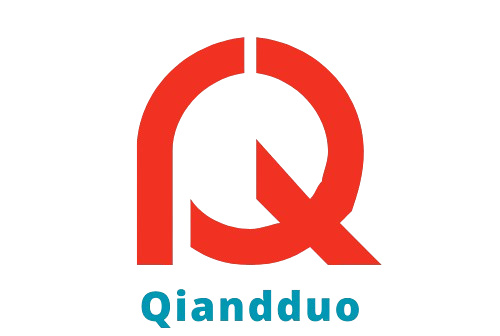In a time where advanced presence is significant, web improvement remains as the foundation of our internet based encounters. From the smooth plan of a corporate site to the intelligent components of an intricate web application, web improvement coordinates both workmanship and innovation to create the computerized world we explore consistently. This article investigates the fundamentals of web advancement, its authentic development, latest things, and future headings.
Figuring out Web Improvement
Web improvement envelops the cycles and https://xbjksh.com/ methods engaged with making and keeping up with sites and web applications. It incorporates different disciplines and innovations to convey a consistent client experience. The field can be partitioned into a few center regions:
Frontend Improvement: Otherwise called client-side turn of events, this spotlights on the pieces of a site that clients interface with straightforwardly. Frontend engineers use dialects like HTML (Hypertext Markup Language), CSS (Flowing Templates), and JavaScript to assemble responsive and outwardly engaging UIs. Their essential objective is to make a connecting with and natural experience across various gadgets and screen sizes.
Backend Advancement: This alludes to server-side turn of events, managing the usefulness that clients don’t have the foggiest idea however communicate with by implication. Backend designers use dialects like Python, Ruby, PHP, and Java, and work with data sets like MySQL and MongoDB. They handle information the board, server rationale, and combination, guaranteeing that the frontend has the fundamental information and usefulness.
Full-Stack Improvement: Full-stack designers are capable in both frontend and backend advancements. They deal with all parts of a web project, from planning UIs to creating server-side rationale, offering an all encompassing way to deal with web improvement.
Website composition: Albeit firmly connected with frontend improvement, website composition centers explicitly around the feel and client experience of a site. Planners work on visual components, for example, design, variety plans, typography, and by and large client collaboration to guarantee that the site isn’t just useful yet in addition outwardly satisfying.
The Advancement of Web Improvement
Web improvement has made considerable progress since its beginning:
Early Web (1990s): The early web was set apart by static HTML pages. Sites were essential, with restricted intelligence and straightforward message and pictures. Usefulness was insignificant, zeroing in basically on happy show.
Dynamic Web (2000s): The presentation of server-side prearranging dialects and innovations like AJAX (Nonconcurrent JavaScript and XML) considered more unique and intelligent sites. This period saw the ascent of highlights like continuous updates and customized content.
Web 2.0 (2000s-2010s): Web 2.0 accentuated client created content and social cooperation. The improvement of virtual entertainment stages, websites, and cooperative devices featured the significance of client commitment and local area building.
Current Web (2010s-Present): The present web advancement is portrayed by refined structures and libraries, for example, Respond, Rakish, and Vue.js for frontend improvement, and strong backend innovations like Node.js and microservices. The attention is on making quick, versatile, and profoundly intelligent web applications.
Latest things in Web Improvement
A few key patterns are at present forming the scene of web improvement:
Responsive Plan: With the rising utilization of cell phones, responsive plan is fundamental. Sites should adjust to different screen sizes and directions to guarantee a reliable client experience across all gadgets.
Moderate Web Applications (PWAs): PWAs mix the best elements of web and portable applications. They offer disconnected usefulness, message pop-ups, and quick burden times, giving a close local application experience through an internet browser.
Computerized reasoning (simulated intelligence) and AI (ML): man-made intelligence and ML are progressively incorporated into web applications to improve usefulness and client experience. Models incorporate chatbots for client service, customized content proposals, and prescient examination.
WebAssembly (Wasm): WebAssembly empowers elite execution applications to show straightforwardly in the program to gathering code from dialects like C, C++, and Rust into a double organization. This innovation works with quicker and more productive web applications.
Serverless Engineering: Serverless processing permits designers to assemble and send applications without overseeing server framework. By utilizing cloud administrations, designers can zero in on coding while the cloud supplier handles scaling and server the board.
The Eventual fate of Web Advancement
Looking forward, web improvement is set to encounter a few invigorating headways:
Upgraded Security: As digital dangers advance, security will turn out to be significantly more basic. Carrying out powerful safety efforts, including encryption and ordinary security reviews, will be fundamental to safeguard client information and guarantee safe internet based collaborations.
Further developed Client Experience (UX): Future web improvement will keep on zeroing in on making drawing in and natural client encounters. Progresses in UX configuration will prompt more intuitive and vivid web applications.
Mix of Arising Innovations: Advancements like expanded reality (AR), computer generated reality (VR), and the Web of Things (IoT) will progressively be coordinated into web applications, offering additional opportunities for intelligent and associated encounters.
Supportability: As natural worries ascend, there will be a developing accentuation on manageability in web improvement. This incorporates enhancing execution to decrease energy utilization and embracing eco-accommodating practices being developed and facilitating.
End
Web improvement is a dynamic and essential field that drives our computerized connections. From the beginning of static pages to the high level, intelligent utilizations of today, it has persistently developed to meet innovative headways and client assumptions. As we push ahead, web improvement will keep on developing, integrating new advances and patterns to upgrade client encounters and address arising difficulties. It stays an essential part of the computerized scene, forming the manner in which we interface, communicate, and draw in with the internet based world.
